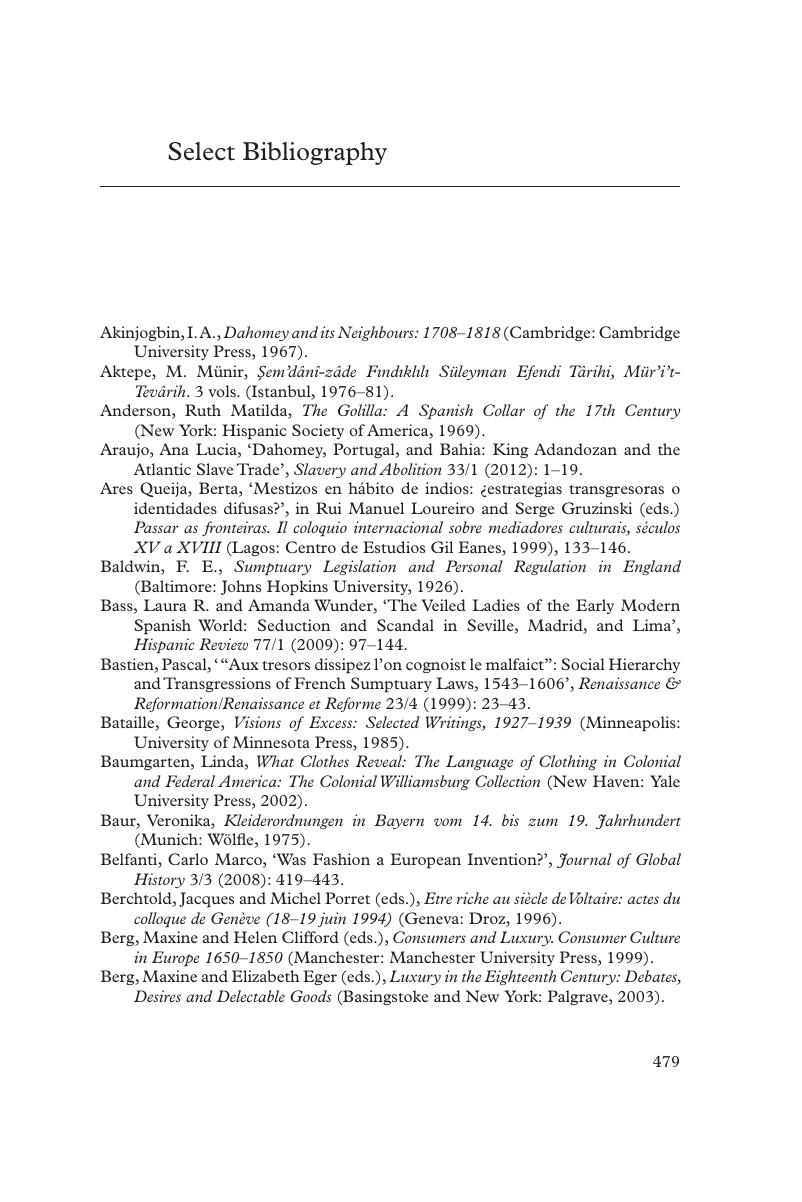Book contents
- The Right to Dress
- The Right to Dress
- Copyright page
- Contents
- Figures
- Contributors
- Acknowledgements
- Introduction
- Part I Sumptuary Laws in Medieval and Early Modern Europe
- Part II Enacting Sumptuary Laws in Italy
- Part III The European Maritime Powers and Their Empires
- Part IV Early Modern World Empires
- Select Bibliography
- Index
- References
Select Bibliography
Published online by Cambridge University Press: 11 January 2019
- The Right to Dress
- The Right to Dress
- Copyright page
- Contents
- Figures
- Contributors
- Acknowledgements
- Introduction
- Part I Sumptuary Laws in Medieval and Early Modern Europe
- Part II Enacting Sumptuary Laws in Italy
- Part III The European Maritime Powers and Their Empires
- Part IV Early Modern World Empires
- Select Bibliography
- Index
- References
Summary

- Type
- Chapter
- Information
- The Right to DressSumptuary Laws in a Global Perspective, c.1200–1800, pp. 479 - 490Publisher: Cambridge University PressPrint publication year: 2019



